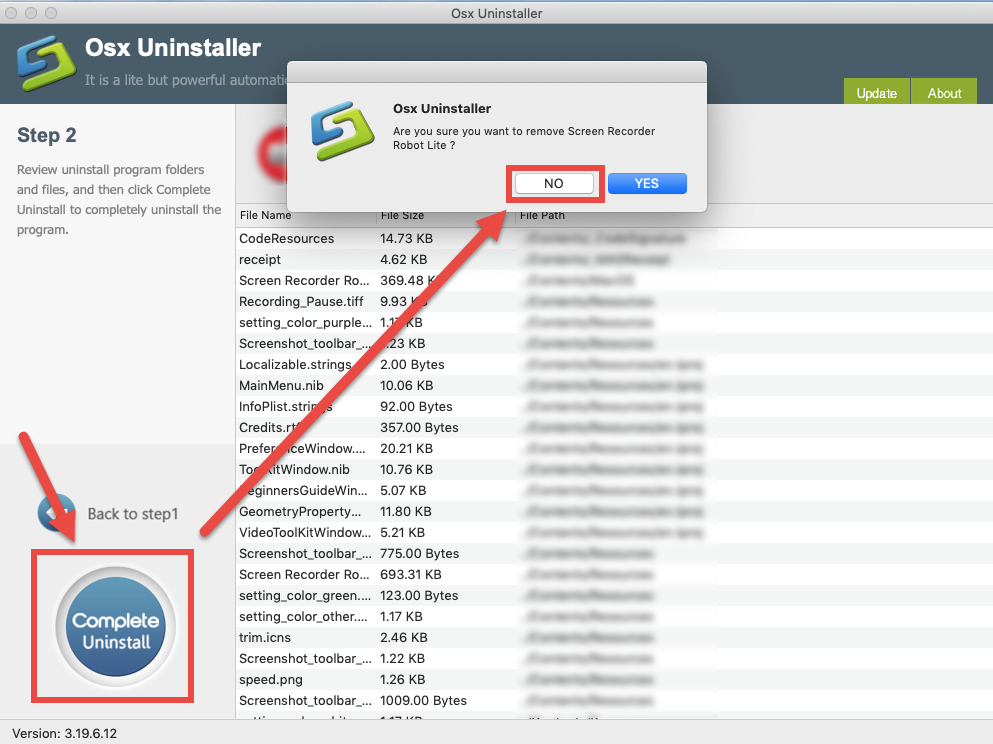There should be a button to allow Soundflower to be installed. Then try to install Soundflower again. After a successful installation, two soundflower option should appear in the sound options menu. When JumpDesktop connects to the Mac, it will automatically use the right sound option. You don't need to switch settings manually. Soundflower is free, open-source, and runs on Mac Intel and PPC computers. Example: To send audio from iTunes to Max/MSP, open the System Preferences and select Soundflower (2ch) as the device for sound output inside the Sound panel. Then, inside Max/MSP's DSP Status Window, select Core Soundflower (2ch) as the input device. How to Delete SoundFlower Manually From Mac? Using The Package Or Can Say Uninstaller File. When you installed SoundFlower, you might have noticed a file labeled Uninstall SoundFlower.scpt in the SoundFlower installation package. If not, let me tell you when you install SoundFlower, and the uninstallation file is also installed. Soundflower is a Mac OS X system extension that allows applications to pass audio to other applications. Soundflower is easy to use, it simply presents itself as an audio device, allowing any audio application to send and receive audio with no other support needed. Soundflower is free, open-source, and runs on Mac Intel and PPC computers.

Wheather you want to record your favorite radio station or the video game music playing on your Mac, Soundflower is the most popular option out there. For the unknown, Soundflower is a software that helps you route sounds to any Mac app instead of the default speakers. I’ve been using Soundflower for the past 3 years and never had any problem. However, after the latest macOS updates, the recent version of Soundflower has stopped working on Seria and High Seria. If you download Soundflower setup from Google, you are most likely to get Soundflower installation failed error.
Read: Automatically Transcribe YouTube Video/Audio using Soundflower on Mac
So, why do we get Soundflower Installation Failed error?
After a bit of research, I found the answer on StackExchange, according to the author alecail, this is due to System Integrity Protection. El Capitan and higher versions require kext to be signed in order to load them. This one gets its kext installed in /Library/Extensions/ and not in /System/Library/Extensions as previous versions were
However, his solution didn’t work for me. Thankfully after a bit of research, I was able to dig in the kext signed version from the developer. Follow the steps.
Fixing Soundflower Installation Failed
1. Download the signed version of Soundflower using this link. Download the file that says “Soundflower-2.0b2.dmg” and install the dmg on your Mac like you install any other app. Simply, run the Soundflower package installer by double-clicking on the pkg file. Depending on your macOS setting, you might see an error from GateKeeper.
2. To bypass it, you need to temporarily disable GateKeeper. Go to System Preferences choose Security & Privacy and then click the General, next, to make any changes you have to click the Padlock icon in the bottom left corner to unlock the settings. Next, click on Open Anyway, next to Soundflower.pkg was blocked.
3. Accept the security warning and go back and click on the Soundflower package, once done, you’ll be able to install the signed version with no problem
4. Now, open System Preferences on your Mac, select Sounds, switch to the Output tab and set Soundflower (2ch) as the device for sound output. A quick way to test if Soundflower is working or not is by start playing any audio file, while Soundflower is ch2 is select for output. You shouldn’t be able to hear anything.
5. Now, open Quicktime or any audio recording software. QuickTime allows the Mac user to play movie files, but it can also be used to record screencast and audio. Since it’s free and built-in, we’ll use it for this instance. However, if you want more control, you can use a free app like Simple Recorder. We use it and it works fine.
6. Go to File and choose Audio Recording, a new window will pop-up. Click on the drop-down arrow next to the recording icon and set the audio source select Soundflower ch2 and start audio recording. you won’t hear anything but your Mac’s internal audio will record in the background.
The only downside is, you can’t hear want’s being recorded, so make sure you place close attention to the timestamps of the audio you want to record. Once you are done, simply click on the stop icon on QuickTime icon to stop the recording. It’ll show you a preview your recorded file.
Again, remember, you won’t be able to hear anything since you have set the output source to Soundflower in the Sound setting of your Mac. So, you need to reverse the changes you did there (set the Sound output to speaker or headphones) and listen to your recording. If you are satisfied with your recording, save it on your desktop or something. And that’s it.
How to Uninstall Soundflower
Unlike other Mac’s app, you won’t find Soundflower in your Application folder. Instead, to uninstall Soundflower, just run the Uninstall Soundflower.scpt present in Soundflower folder. if you don’t have it, you can download it from the link above.
Also Read: How to Connect USB Mic to Smartphone for Video Recording
Last Updated on September 23, 2020 by Robert Jackson

Since QuickTime, the built-in program of macOS only supports to record the external sound from the microphone, lots of Mac users keep complaining about the fact that they cannot record the internal sound on their computers.
To record the internal sound on a Macintosh, QuickTime Player or Voice Memo is no longer helpful. You need to find yourself a perfect Mac audio recorder to record the internal sound on your Mac computer.
In this tutorial, you can find out 2 methods to record the system sound on a Mac computer. Hopefully, you can have a perfect audio file with the help of the following methods.
Can I still use QuickTime Player to record the internal sound on Mac?
QuickTime Player is helpful to record the internal sound on your Mac computer with the help of Soundflower – an audio extension that is massively used in Mac computers for audio recording.
How Soundflower works?
QuickTime cannot record the internal sound due to the absence of a recordable audio output device.
With QuickTime installed, users can use it to manually create a virtual audio output device on a Mac computer for internal audio playback. Then, QuickTime can detect this new device and record the sound from it.
In this way, you can use QuickTime to record the internal sound on your Mac.
Use QuickTime Player to record internal sound on Mac with Soundflower?
Step 1 Install Soundflower on your Mac.
- You can click here to download.
Step 2 Set up for the Soundflower output device.
- On your Mac, search for ‘Audio MIDI setup‘.
- Then, on the window, click the “+” icon to add an ‘Aggregate Device‘.
- Check the Built-in Microphone and Soundflower (2ch) from the Audio Device tab.
- Next, click the ‘+‘ icon again and create a ‘Multi-Output Device‘.
- Tick ‘Built-in Output‘ and ‘Soundflower(2ch)‘ from the Audio Device Tab.
- Close the window.
Step 3 Record internal sound
- Open QuickTime and click the arrow next to the red Record button.
- Choose ‘Soundflower(2ch)‘ from the drop-down list.
- Click Record to start capturing the internal sound.

Should you use QuickTime along with Soundflower to record internal sound?
From my point of view, to set up Soundflower is not an easy task. You need to locate a lot of items and tick several options. If you miss one or make just one mistake, QuickTime cannot record the internal sound relatively.
Also, QuickTime has quite a few limitations.
Cons of QuickTime audio recording:
- You cannot change the format of the audio file (m4a. only) and trim the audio.
- There’s no shortcut for activating QuickTime audio recording. So when you’re about to record the sound from an online interview or meeting, it could be messed up to ask other participants to wait for a while.
- QuickTime can only record one audio source at a time. So when you’re about to record a meeting or interview, you can only choose to record your own voice or others’ voices.
Soundflower For Mac Sierra
Now, you might wonder how to record internal audio on Mac without Soundflower and QuickTime. You can try Aiseesoft Mac Screen Recorder.
How to record internal sound on Mac without QuickTime&Soundflower?

As the most advanced video and audio recording software on the market, Aiseesoft Mac Screen Recorder has an incredible performance in recording internal sound on Mac.
- Mac Screen Recorder can record all sounds, internal or external, separately or simultaneously.
- You can use the one-press shortcuts to activate an audio recording.
- A user-friendly interface is offered.
- The format and quality of the output files are adjustable.
- It supports desktop recording, you can use it to record your onscreen movement.
These’re what Mac Screen Recorder can do for you, wanna give it a go? Here’s how you can use it to record internal sound on your Mac.
Step 1 Download Mac Screen Recorder on your Macintosh
Step 2 Choose Audio Recorder
Launch the software, on the interface, choose Audio Recorder to record internal sound. You may go to Preferences to set up the shortcut, format (m4a, mp3, wmv, aac) and quality (low, middle, high, lossless) of output files, etc.
Step 3 Record the internal sound
On Audio Recorder, you need to turn on the System Sound option and turn off the Microphone option. In this way, the software will only capture the sound coming from the system.
Click REC, or press the default hotkey Ctrl + Cmd + S on your clipboard to start recording. A process bar will appear, you can see the time of your audio file, you can pause the recording if there is anything you don’t want to capture.
When you finish your recording, click Stop or press Ctrl + Cmd + S.

Then, you’re available to listen to the audio you just record, you can trim it too.
Click Save, the audio file will be stored on the Mac.
You can check that out on the Recording history of Aiseesoft Mac Screen Recorder.
Soundflower Mac Os
To warp up:
Now, you know how to record internal audio on your Mac, right? Go and try it yourself. By the way, if you want to record desktop or onscreen activities on your Mac, you can try Aiseesoft Mac Screen Recorder as well.
